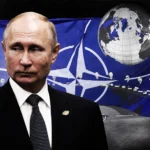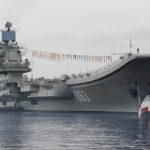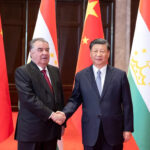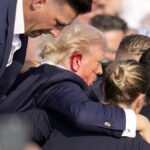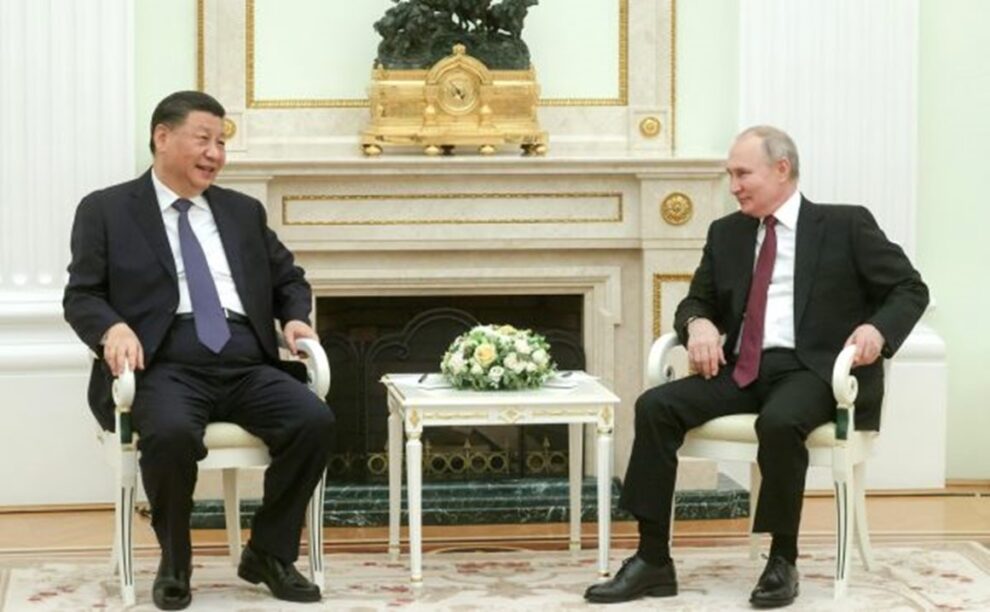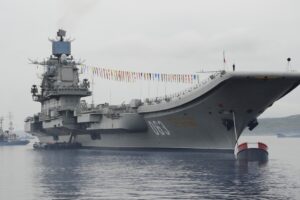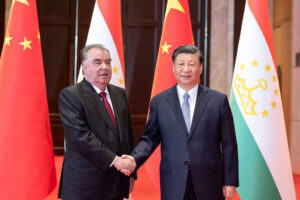Africa and the Middle East provide conducive conditions for China and Russia to advance their shared and separate agendas.
Beijing aspires to restore China’s centrality in the global system. Moscow aims to achieve Russia’s revanchist agenda at all costs. In attempting to reconfigure the international rules-based order, China’s paramount leader Xi Jinping and the Chinese Communist Party (CCP) are positioning China as a rule-maker, system-shaper, and standard-setter. As disrupter, spoiler, and saboteur in upending global order, Vladimir Putin and the Kremlin seek to revive Russia’s relevance as a great imperial power.
Together, China and Russia are undermining U.S. leadership and challenging NATO. Beijing and Moscow understand that exploiting intra-EU friction is pivotal in eroding transatlantic solidarity. As war fatigue mounts, a divided U.S.-EU relationship would weaken NATO – a key variable in the China-Russia geostrategic calculus.
Russia’s war on Ukraine has magnified the core elements of China-Russia cooperation: target the United States as the main instigator of NATO’s eastward expansion; criticize the complicity of the EU and other U.S. allies; amplify each other’s mantra of “respect for the sovereignty of all countries”; suppress domestic debate about the war among Chinese and Russian citizenry; systematically spread disinformation; and promulgate Sino-Russian leadership as an alternative geopolitical center of gravity.
Beijing and Moscow are empowering each other to mask deep mutual, strategic distrust. As junior partner to China, Russia relies on China’s economic, financial, and technological support, knowing that Beijing aims to eclipse Moscow’s geopolitical influence in Central Asia, Russia’s backyard, and in the Global South. China’s superior stature in this relationship lends Beijing leverage to legitimize China’s anti-U.S. agenda with Russia’s imprimatur. Even a Russia vilified by the wealthy West can be useful to Beijing in elevating China’s rising stature across the Global South, where Russia is still regarded as a strong and influential nuclear power.
This great power rivalry between the U.S.-EU-led liberal, democratic world order and China-Russia-charged autocratic alternative is unfolding with far-reaching scope, scale, and stakes in the Global South, an intermediate zone where countries’ national interests are driving their hedging strategies vis-à-vis the West and anti-West. As two critical regions with vast natural resources and diverse strategic interests, Africa and the Middle East provide conducive conditions – autocratic governance, restricted media, authoritarian capitalism, surveillance states, weak rule of law, etc. ̶ for China and Russia to advance their shared and separate agendas.
Africa: A Gravitational Shift from West to East
Russia and China are pursuing different strategies toward Africa but share a convergent goal of bolstering authoritarian regimes and undermining U.S. and European influence on the continent. Through commercial, financial, and military engagement, China and Russia aim to accelerate a gravitational shift in Africa from the West to the East.
The voting power of China and Russia as permanent members of the United Nations Security Council is a highly effective tool in projecting their cooperation on votes and vetoes that serve their mutual interests. Through hard and soft power, Beijing and Moscow engage the voting power of Africa’s 54 countries, which compose the largest single voting bloc in the U.N. General Assembly.
Through the BRICS bloc – Brazil, Russia, India, China, and South Africa – Beijing and Moscow are bolstering regional hegemon South Africa, as displayed at the Exercise Mosi-2 maritime exercises in the Indian Ocean recently conducted with the South African, Chinese, and Russian navies.
Beijing’s multilateral approach, which includes its Belt and Road Initiative, Global Development Initiative, and Global Security Initiative, extends China’s infrastructure investment, capacity building, and regional security engagement as platforms to propagate China’s model of governance in the Global South, including Africa and the Middle East.
The countries participating in the Belt and Road Initiative (BRI) – a trillion-dollar mega infrastructure development platform launched in 2013 as the centerpiece of Xi Jinping’s foreign policy ̶ span all continents, with approximately 147 in total under various types of cooperation agreements. Despite Western concerns that the BRI creates a debt trap for developing countries, the initiative continues to progress in the Global South. Seventy-four percent of the world’s countries have signed on to the BRI as of 2022, with 94 percent of sub-Saharan African countries having signed on and 85 percent of the countries of the Middle East and North Africa (MENA), according to AidData. Forty-three BRI countries are in sub-Saharan Africa and 18 are in MENA.
Beijing initiated the Global Development Initiative (GDI) at the U.N. General Assembly in 2021 in order to galvanize a global community of development through implementation of the U.N.’s 2030 Agenda. The GDI Group of Friends consists of more than 60 countries. GDI cooperation projects have received support from the Global Development and South-South Cooperation Fund.
The BRI and GDI operate on parallel tracks with clear and complementary differences, as the Development Policy Centre delineates:
While the BRI is economic growth oriented, the GDI is development oriented. The BRI delivers hardware and economic corridors, while the GDI focuses on software, livelihoods, knowledge transfer, and capacity building. The BRI is market oriented, where enterprises play a key role. While the BRI’s pathways are mostly bilateral and regional, involving MOUs with partner countries, the GDI promotes diverse partnerships with multilaterals, NGOs, and the private sector.
Africa also features prominently in China’s Global Security Initiative (GSI), the CCP’s blueprint for integrating China’s security priorities and practices into like-minded stakeholder-countries’ national security systems. Using the U.N. aegis, Beijing is promoting China as a primus inter pares dispute arbiter, architect of new regional security frameworks, and trainer of security professionals and police forces in developing countries. Involvement in multilateral platforms, such as the African Union, Silencing the Guns in Africa, China-Horn of Africa Peace, Governance and Development Conference, China-Africa Peace and Security Forum, and the Secretary-General’s Peace and Security Sub-Fund of the China-U.N. Peace and Development Trust Fund, etc. gives agency to CCP personnel at all levels of leadership to advance China’s agenda.
Russia’s approach to Africa is more specialized. Russia’s military support, energy security exploits, minerals mining, and elite political co-optation sustains strongman political culture in various African countries but has a destabilizing impact on other African societies. Russia provides 49 percent of Africa’s military equipment, including major and small arms. Main importers include Algeria, Angola, Burkina Faso, Egypt, Ethiopia, Morocco, and Uganda. The United States holds 37 percent market share of weapons exports to Africa, with Russia holding 20 percent. Current sanctions on Russia and global supply chain disruptions have likely opened avenues for alternative and black-market arms suppliers in Africa.
According to Professor Janos Besenyo, head of Africa Research Institute at Obuda University, Russian energy companies have significant investments in Algeria’s oil and gas industries as well as investments in Libya, Nigeria, Ghana, Ivory Coast, and Egypt. The Coordinating Committee for Economic Cooperation with sub-Saharan Africa promotes Russian business interests across the continent.
Middle East: Regional Dynamics Optimize China-Russia Cooperation
The convergence of Chinese and Russian strategies in MENA, including the eastern Mediterranean region, poses an ongoing geostrategic challenge to the West and NATO’s southern flank. MENA regional dynamics are optimal for China and Russia to embolden Iran, capitalize on Saudi Arabia-Iran rivalry, and compel U.S. ally Israel to hedge against great power competition.
In the geopolitics of petro-powers, China is the net beneficiary of discounted Russian oil and consumer of Saudi Arabian and Iranian energy sources. Saudi Arabia supplies 70 percent of China’s oil and 40 percent of its natural gas. China’s imports of Iranian oil reached 1.2 million bpd in 2022, a 130 percent increase from 2021, and will continue to increase.
China’s BRI and GSI’s integration of its civil-military fusion commercial, technological, and surveillance capabilities into MENA countries’ infrastructure development plans will gradually undercut Moscow’s leverage and maximize Beijing’s ability to shape MENA’s geopolitical landscape to China’s advantage.
China’s foreign policy approach in the Middle East reflects Xi Jinping’s great power diplomacy with Chinese characteristics model. China’s primary comprehensive strategic partnerships include five MENA countries: Iran, Saudi Arabia, Egypt, the UAE, and Israel.
China has been the Arab world’s leading trade partner since 2020, surpassing $330 billion in two-way trade since 2021. In addition to signing a 25-year agreement with Iran in 2021, China has similar agreements with 12 Arab MENA countries. The Suez Canal, Red Sea, Gulf of Aden, Bab al-Mandab, Strait of Hormuz, and Indian Ocean are key waterways and chokepoints of China’s Maritime Silk Road, interlinking Africa and MENA with Asia through maritime shipping routes.
Chinese stakes in Mediterranean ports, including Piraeus, Genoa, Trieste, Taranto, Haifa, Ashdod, Djibouti, and Sokhna, facilitate China’s expanding surveillance and intelligence-collection efforts through commerce. China’s three top port operators ̶ China Merchants Port Holdings, COSCO Group, and China Shipping Terminal Development ̶ are Chinese state-owned enterprises. ZPMC, one of the world’s largest ship-to-shore crane manufacturers and subsidiary of China Communications Construction Company, a state-owned enterprise and contractor for BRI projects, embeds surveillance technology in their cranes, according to the Pentagon.
MENA is an integral region in China’s BRI and GSI. Iraq was the region’s top recipient of BRI funding ($10.5 billion) in 2021. Through the BRI, Chinese state-owned enterprises have contributed to myriad MENA projects in smart city grids, 4G and 5G communications, artificial intelligence, cloud computing, collaboration on BeiDou Navigation Satellite System, and the Green Silk Road of new energy, among others. The BRI is also supporting the Vision 2030 plans of Saudi Arabia, Qatar, and Egypt.
Through the GSI, China intends to establish a new security framework in the Middle East with the support of the League of Arab States. With a military base in Djibouti, China is reportedly exploring Bahrain, Iran, Oman, Saudi Arabia, and Yemen as possible sites for new bases. China is assisting Saudi Arabia in establishing its first drone factory and with Riyadh’s domestic development of ballistic missiles. China has also sold planes, drones, and missiles to the armies of the United Arab Emirates, Egypt, Iraq, Jordan, Turkey, Morocco, and Algeria, according to an Atlantic Council Report (2023). Iran will become an official member of the Shanghai Cooperation Organization, which is co-led by China and Russia, in April 2023.
China-Russia cooperation represents a tactical alliance that serves China’s long-term strategic advantage. MENA’s tribal and autocratic political culture is conducive for Moscow and Beijing to coalesce an authoritarian counterweight to the West. China and Russia in cooperation with Iran are galvanizing autocratic grievances against Western democracy. With Ukraine as the focal point of the current conflict in Europe and Taiwan as the fulcrum in a plausible future conflict in the Indo-Pacific, Israel will most likely be the crucible of confluence between geostrategic and historical forces in the MENA and eastern Mediterranean.
Countervailing Narrative: Discourse Power, Digital Governance, and Data Security
China and Russia are closely coordinating in propagating an anti-West and anti-democracy narrative to challenge U.S. and Western primacy in the global rules-based order. This countervailing narrative – mainly from Beijing with Moscow’s amplification – manifests China’s “discourse power.”
According to Lu Wei:
National discourse power is the influence of a country’s “speech” in the world… National discourse power and information security are closely connected and inseparable. Without discourse power, it will not be possible to realize sustainable information security in the true sense of the world; without information security, it is also not possible to have strong and effective discourse power.
Lu Wei formerly served as vice director of Xinhua News Agency, China’s official state-run media organ, and then as minister of the Beijing Propaganda Department and head of the Cyberspace Administration of China (CAC) during its first three years of existence (2014-2016). Under the jurisdiction of the CCP, CAC serves as the primary regulator, censor, and administrator of China’s internet apparatus and policy.
China’s national discourse power essentially propagates the CCP’s worldview, in which China plays a central role in rewriting international rules, shaping the global system to advance China’s national interests, and setting standards in digital governance and data security as well as telecommunications, artificial intelligence, quantum computing, and other advanced technologies.
China also uses national discourse power to repudiate the West’s “prevalent discourse,” which often contains “latent discursive hegemony, depriving other countries of the right to speak, to say even less about their discursive power,” according to Lu Wei.
In the battle between China’s national discourse power and the West’s prevalent discourse, Russia’s discourse power capabilities augment China’s messaging with additive disinformation and distortion. Their shared strategy is both to capture “hearts and minds” in Global South societies and embolden the discourse power of authoritarian and illiberal regimes in these regions. Much of China and Russia’s work has taken place within the Group of Government Experts on the Developments in the Field of Information and Telecommunications in the Context of International Security, according to the Center for a New American Security analysis.
Source : The Diplomat

